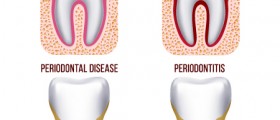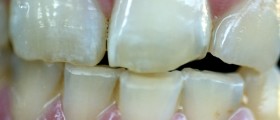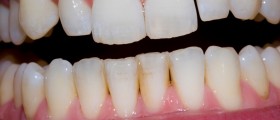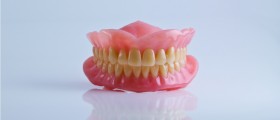
Gingival hyperplasia
Gingival hyperplasia is a condition marked by the enlargement of the gingiva, or the soft tissue found in the mouth (popularly known as the gums). In the majority of cases, the enlarged gums are firm and they are not painful swellings. Sometimes, it happens that the enlarged gingiva completely covers the teeth.
There are cases when these gum swellings are accompanied by bleeding and tenderness. The bleeding and tenderness in the gums usually appear when this condition is connected with gingivitis. Gingival hyperplasia can be also medically called fibromatous periodontal hyperplasia. This gums disorder is very frequent in cats and dogs. Gingival hyperplasia is very common in large and giant breeds of dogs, such as Great Danem Doberman pinscher, Boxer and Dalmatian.
Causes of gingival hyperplasia
Many causes may be responsible for the occurrence of this gums disorder. The women who are pregnant are at high risk to develop this condition. Furthermore, there are certain indications that this condition can even be inherited due to certain genes that are responsible for that. Fetal valporate syndrome is a condition that has gingival hyperplasia as a symptom. Moreover, when a person is long exposed to bacterial plaque, it can lead to the development of gingival hyperplasia. There are also certain medicines in cases of which the long consummation can cause this condition. These medicines are dephenylhydration, nifedipine, cyclosporin, nitrendipine and many others.
Treatment of gingival hyperplasia
When one develops gingival hyperplasia, it is important to treat it because of two reasons. First of all, person with this condition has the problem with eating. It is very difficult to eat when gingival hyperplasia is present. Furthermore, the enlargement and swelling of gums does not look pleasant and usually causes much of embarrassment. In order to diagnose gingival hyperplasia, the doctor orders several tests to be done and these tests include even a complete blood count, urinalysis and biochemical profile. Furthermore, the oral cavity of the patient is examined and the biopsy of gingiva is taken.
One should know that the patient usually goes first to a dentist, although many other specialists may be consulted in order to treat the main cause of gingival hyperplasia. To cure gingival hyperplasia completely, it is important to eliminate the underlying cause. For example, if it is caused by overtake of certain drugs, the drugs should not be consumed any more. Sometimes, when the cases are severe, even a surgery is required to remove the affected gums.



_f_280x120.jpg)













Your thoughts on this
Loading...